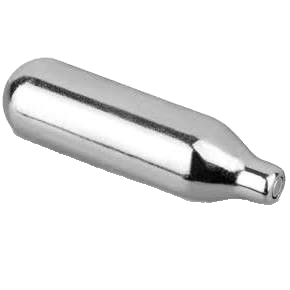Nitrous Oxide (Nos)
Also called:
Laughing Gas, Whippets, Chargers, Noz

Nitrous Oxide is a colourless gas which has a variety of uses including in catering, automotive and medicine.
Report on the effects of NOS
View video below:
Appearance
Nitrous oxide is most commonly found in pressurised metal canisters. You may have seen these metal canisters lying around in the streets and parks.
Effects
Nitrous oxide slows down your brain and your body’s responses - the effects of the drug vary depending on how much has been inhaled. It can result in feelings of happiness, relaxation and calmness. Fits of giggles and laughter are common, along with sound distortions and hallucinations.
Nitrous oxide can also cause dizziness and give you a severe headache. Although short-lived, it can also cause intense feelings of paranoia.
How it's taken
Nitrous oxide is inhaled. People open the canister, transfer the gas into a container (usually a balloon), then inhale from the balloon.
Risks
• It is very dangerous to inhale nitrous oxide directly from the canister and doing it in an enclosed space is also dangerous.
• Avoid the use of plastic bags. People have died of suffocation due to putting bags over their heads.
• If you take too much nitrous oxide, you risk falling unconscious and/or suffocating from lack of oxygen.
• Dizziness, which might make you act carelessly or dangerously.
• Heavy, regular use of nitrous oxide can lead to a deficiency of vitamin B12 and to a form of anaemia. Severe B12 deficiency can lead to serious nerve damage, causing tingling and numbness in the fingers and toes.
• It can be hard to judge the amount to use safely. If you have too much, you can end up fainting, having an accident or worse.
Keeping Safe
• If you choose to use nitrous oxide, then use it in a safe environment and in the company of someone you trust. Ideally, this person will not have used the substance themselves and will be in a position to get help if things go wrong.
• Nitrous oxide can be habit forming and tolerance can build up (needing more of the drug to get the same effect). Don’t use it too frequently and take regular breaks.
• The use of nitrous oxide with alcohol or other substances should be avoided.
• After inhaling nitrous oxide, ensure you breathe normal air for several minutes.
• Use balloons rather than plastic bags and sit down before inhaling.